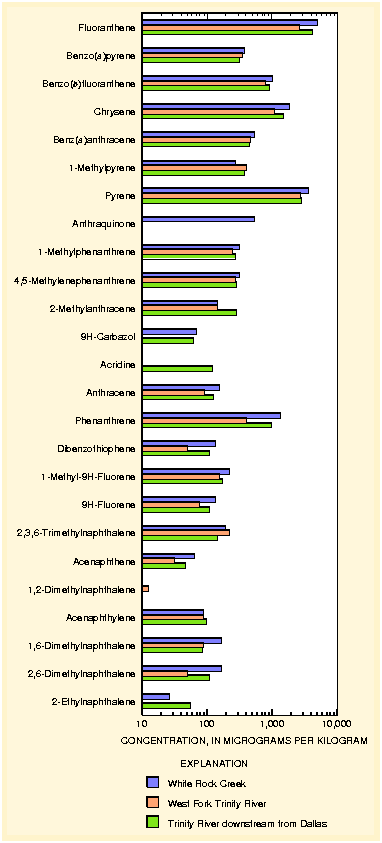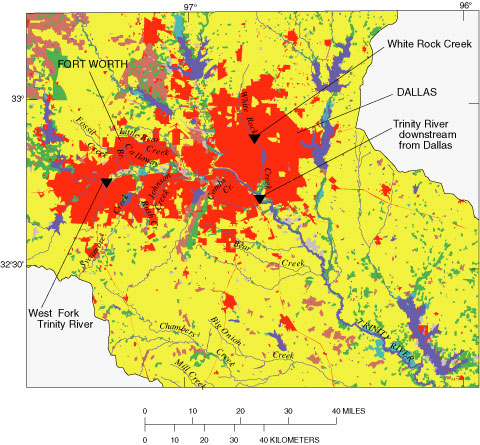


PAHs are a group of organic compounds that are abundant in the environment and are toxic and often carcinogenic to organisms. Major sources of PAHs are oil spills and the incomplete combustion of fossil fuels.
PAHs are metabolized and excreted by most higher vertebrates, particularly
fishes, which can make assessment of concentrations in tissues impossible.
SPMD technology (Huckins and others, 1990) is new. An SPMD simulates the exposure to and passive uptake of highly lipid-soluble organic compounds by biological membranes. An SPMD typically consists of a long strip of low-density, polyethylene tubing filled with a thin film of a purified lipid such as triolein. The long strip of tubing and lipid film provide a large surface area/volume ratio that simulates a biological membrane such as a fish gill. The SPMDs used in this study concentrate PAHs above ambient concentrations in water and simulate biological exposure over a controlled period of deployment.
One site on each of three streams was selected for monitoring the occurrence of PAHs. The sites were chosen to reflect varied urban land uses and the influences of point and nonpoint sources of contaminants or PAHs. The monitoring was done using SPMDs during a 30-day period in late May and June 1994.
Twenty-five different PAHs were detected in the SPMDs. Twenty-three were detected at the Trinity River downstream from Dallas and White Rock Creek sites, and 21 were detected at the West Fork Trinity River site. Seventy-three percent of the PAHs from the White Rock Creek and Trinity River downstream from Dallas sites and 67 percent from the West Fork Trinity River site were substituted PAHs—that is, PAHs with one or more substituted alkyl groups attached.The largest concentrations were of unsubstituted (parent) PAHs, such as fluoranthene, chrysene, pyrene, and phenanthrene; concentrations of these PAHs consistently were largest at the White Rock Creek site and smallest at the West Fork Trinity River site.
The Public Health Service Agency for Toxic Substances and Disease Registry (ATSDR), in cooperation with the EPA, has developed a comprehensive ranking of 275 hazardous substances on the basis of their frequency of occurrence at hazardous waste sites, toxicity, and potential for human exposure (Agency for Toxic Substances and Disease Registry, 1994).
The results of application of SPMDs indicate that aquatic organisms at three sites near Dallas are exposed to toxic PAH compounds. The SPMD is an effective tool to detect hydrophobic organics in water. The small concentrations of the compounds in the streams might not be detected by more traditional water-sampling techniques.

Hazardous PAHs detected in SPMDs
[ASTDR, Agency for Toxic Substances and Disease Registry]
|
PAH |
ASTDR |
|
Benzo(a)pyrene |
8 |
|
Benzo(b)fluoranthene |
10 |
|
Benz(a)anthracene |
35 |
|
Fluoranthene |
100 |
|
Chrysene |
110 |
|
Acenaphthene |
140 |
|
Phenanthrene |
188 |
|
Pyrene |
201 |
|
Anthracene |
235 |
PAHs were frequently detected in SPMDs deployed in urban streams.
| AccessibilityFOIAPrivacyPolicies and Notices | |
 |
|